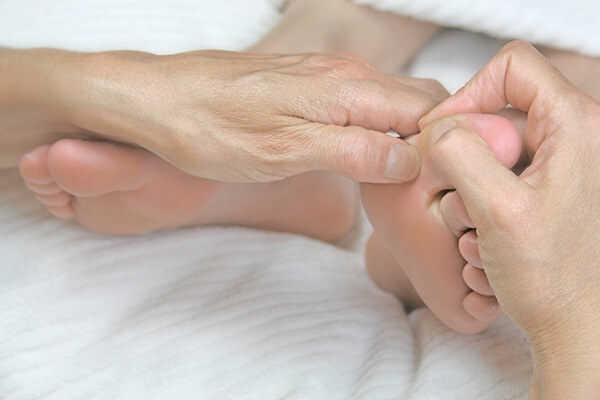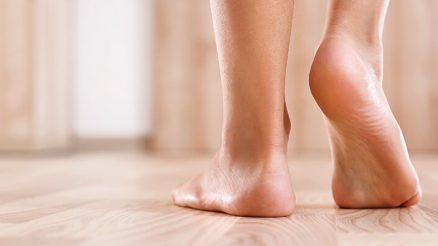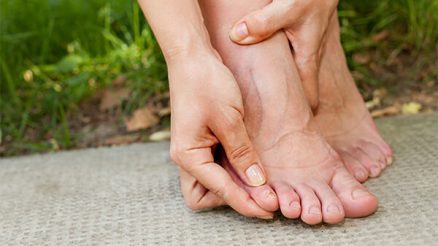
Signs and Symptoms | Causes | R.I.C.E | Treatment | Exercises & Recovery
Dislocated toe is a common problem that occurs after a direct trauma. This results to the toe ligament’s severe sprain. Furthermore, there is a possibility for the toe’s phalanges bones to be displaced at the same time.
You must be aware that a broken or sprained toe is different from having dislocated toe. You must know that that there are cases when there is no extended recovery period necessary for your toes. There are patients that simply mistaken their problem as sprained or broken toe.
Dislocated toe is often associated with immediate or rapid results. By classification, this problem is characterized by the bones being out of place. Most common victims of the problem are the athletes.
Nonetheless, you need to find out what to do for dislocated toe right away. In such way, you will be able to reset your toe quickly. Also, you can go back to your normal routines as necessary.
Signs and Symptoms of Dislocated Toe
If you think you have dislocated big toe, you need to make sure that you are indeed suffering from the ailment. In order to assess your condition better, you should find out the signs and symptoms of dislocated toe beforehand such as:
- Toe area inflammation
- Bruising
- Severe pain after injury
- Tenderness
- Numb feeling
- Deformity in some cases
There may also be abnormalities that result to the issue. For instance, if your joints have malformed sockets. Dislocated toe may also result to ligaments’ laxity.
You must be reminded that treating the condition by yourself should not be the immediate solution. This is due to the fact you must identify the problem’s extent first. This is regardless of suffering from a dislocated pinky toe.
What Could Cause a Toe to Dislocate?
Before focusing on finding out how to fix a dislocated toe, you should find out what probably have caused the issue. Dislocated toe is a common issue that can affect anyone regardless of the age. Most of the time, it results from a severe impact that weighed on the toe.
The problem may also ensue in case you kicked something in an awkward direction. Usually, athletes are affected by the issue. Football players are more at prone to toe dislocation since they often kick the boot of their opponent.
You must also be aware that there are risk factors that can cause you to be more prone to the discoloration. For instance, you often wear footwear that does not protect the toes.
Apple R.I.C.E. Treatment
There are basic ways to treat a toe dislocation. To provide you the most common remedy, you should try the R.I.C.E. treatment. Here are some facts about the solution:
Rest. You need to ensure that you will obtain necessary break from hard-impact activities or exercises. By resting, you will be able to promote quicker healing and recovery. During such time, you should also avoid putting extra weight on your feet.
Ice. Low temperature for your toe is necessary to help it get relief from swelling and pain. To reduce the symptoms associated with the dislocation, you basically need a cold or ice pack for 10 to 20 minutes twice to thrice every day.
Remember, you should not apply ice directly to the skin. You must use a towel in between the ice and the skin. In case the swelling is gone after two to three days, you must apply heat to the affected area.
Compression. This solution involves wrapping the area affected by soreness or injury. You will use an Ace wrap or elastic bandage for it. This step is helpful if you want to eliminate the swelling associated with the dislocation.
You must know that wrapping your toe tightly is not necessary. If you do so, you will simply worsen the condition of the affected area. A Too tight bandage may also give way to tingling, coolness, numbing, increased pain, and worse swelling.
If you think you need the compression for over two to three days, there may be a serious problem behind this. It is best to consult your physician beforehand.
Elevation. From the term itself, you need to raise your sore toe. This is necessary so that you can eliminate the pain associated with the dislocation. Furthermore, elevation may be crucial in avoiding internal bleeding and throbbing.
It is not a difficult task. If you have dislocation in the toe, you just have to prop up your affected leg. You may use pillows while sitting on a sofa. Even when you are icing the problem area, experts recommend that you raise it.
To minimize swelling, you must sustain the area at or above your heart’s level.
How to Treat a Dislocated Toe
Once you have confirmed that you are suffering from a dislocation in the toe, you need to try and pop the affected joint gently. This is important so that you can bring it back to its original position. It is your job to fix the crooked appearance of your toe joint.
It is recommended that you have a companion nearby to reset your toe, especially if you cannot do it yourself.
The process is simple. You simply run your fingers in a pincer angle. Move the toe far from its body. You must do this carefully until the joint snaps from the knuckle area and back to its alignment.
However, you must be aware that the safest means of dealing with the problem is with a podiatrist.
Exercises & Recovery Time
There are a variety of exercises to try if you will be promoting the faster healing of your toe dislocation. Among the routines, you can try horizontal toe raise, vertical toe press, and vertical toe raise.
It will take one to two weeks for your toe dislocation to completely heal. However, if your condition is moderate to severe, it may take longer.
Now that you are more aware of the facts regarding the condition, you will be more careful in handling it. As mentioned above, it has always been important to consult a doctor instead of addressing the problem yourself. It will keep you from further injury and pain.








